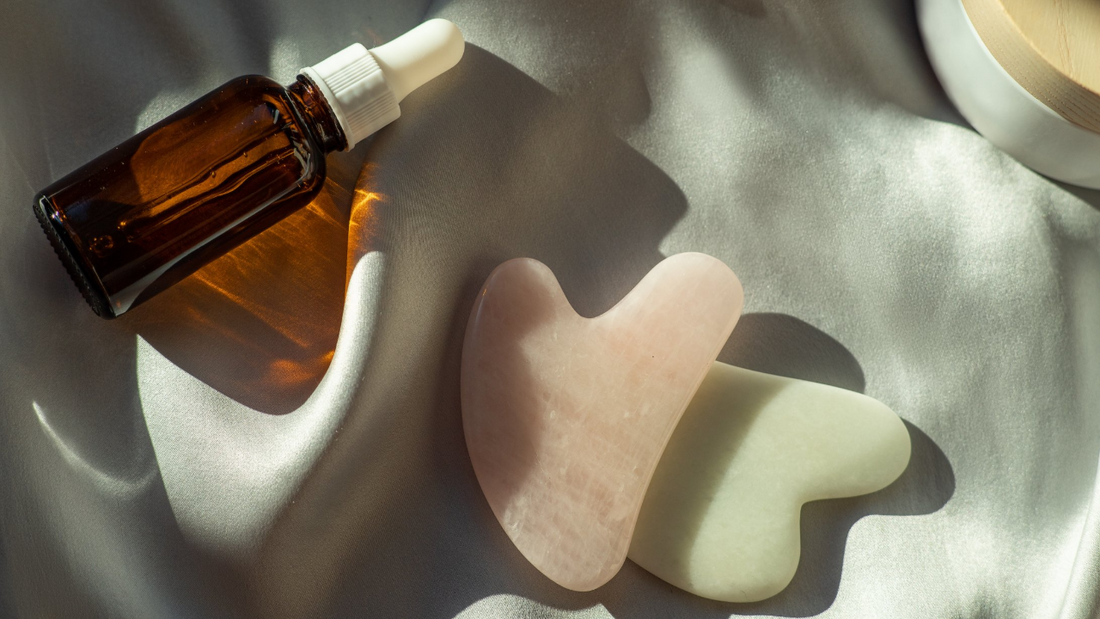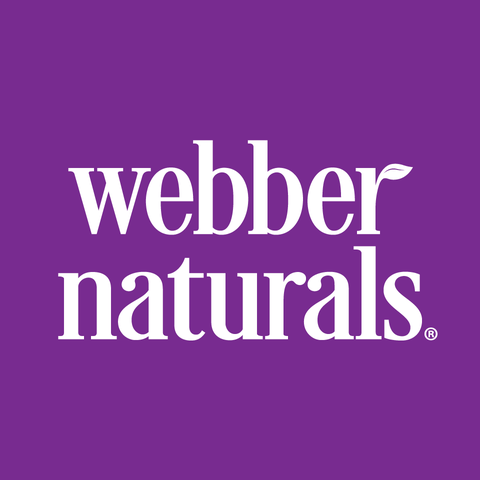Read Time: 5 min | Categories: Body Health | Skincare
Gua Sha 101: What It Is and How to Use It
Webber Naturals
Share this article
When it comes to skin care, there are a few ways to enhance your routine without changing your skincare products. You can glow from the inside out by adding skincare-friendly supplements like collagen peptides or biotin. You can also turn to one of the many tools that have exploded in popularity in recent years. One of our favourites? The gua sha tool!
Used to massage the face, decrease puffiness, and improve circulation, you may have seen North American beauty brands come out with their own versions in recent years. Although it has now received a lot of popularity as a facial tool in North America, gua sha is a centuries-old practice with origins in Traditional Chinese Medicine (TCM). It is a treatment done on the body on areas such as the back, neck, and arms by a TCM practitioner.
In Chinese, gua means “to scrape,” and sha means “petechiae,” which are round, tiny red spots seen underneath the skin’s surface as the result of the repeated pressure on the area. Gua sha involves applying an oil or lubricant on the body and using a smooth-edged tool in a scraping motion in all directions, promoting the formation of sha. This encourages healing of the area, increases circulation and blood flow, and may reduce pain. [1] It can also be used to massage tense areas in the body, such as the neck. [3] In TCM, gua sha promotes the flow of qi, which is an energy that flows through the body and, if blocked, can lead to illness.
When you hear about someone using a gua sha tool in their skincare routine, they’re likely talking about using it on their face in stroking motions with light-to-medium pressure to increase circulation [1] and give the skin a smoother and more lifted appearance. This type of facial massage can be done in the comfort of your own home and is incredibly relaxing to do. It’s the perfect way to cap off your nighttime skincare routine.

What are gua sha facial tools?
Traditionally, gua sha has been practised using tools commonly found around the home, such as a soup spoon or a coin. In recent years, mainstream beauty brands have come out with gua sha tools made of stones such as jade and rose quartz.
Some people choose stones based on aesthetics, while others select them based on specific healing properties or energies that they believe the stone has. No matter which material you choose, all gua sha tools are equally effective, and the stone you pick is based on your personal preference.
What is important to any gua sha tool is that it has a smooth edge with no sharpness, so you don’t get hurt. It’s also important that the gua sha tool is hard enough to apply reasonable pressure without bending or breaking.
Gua sha tools come in all shapes, sizes, and materials. Some have several edges, grooves, and curves to fit different angles of your face. For this reason, you’ll likely have to test out a few gua sha tool shapes to figure out which one you like best. It should be easy to hold in your hand as you use it.

What results do you get from using gua sha tools?
One of the benefits of using a gua sha tool on your face is to relieve tension. You may not realize it, but we often hold tension in our face, so using a gua sha tool to massage tense areas, such as the temples or jaw, can provide some much-needed relief.
People have used the gua sha tool to help reduce puffiness, fine lines, and wrinkles, and help sculpt facial muscles. [4] These benefits can help enhance complexion from the inside out – just like taking supplements such as collagen. In fact, using a gua sha tool can also help lift and firm areas on the face. It’s a natural way to make skin look temporarily tighter and brighter.
How do you use gua sha tools?
Apply oil or moisturizer to your face before using your gua sha tool to ensure that it doesn’t tug on your skin (tugging can cause wrinkles or fine lines). This helps the gua sha tool glide smoothly across your face and allow you to get a deeper facial massage.
Generally, using a gua sha tool on your face involves creating strokes in many directions. To help lymphatic drainage around the neck area, apply pressure on the jaw area with your gua sha tool and create strokes down toward the neck, allowing fluid to drain.

For other areas around your face, you can use repeated strokes in an upward motion to promote lifting and firming. Holding your gua sha tool flatter toward your face allows for more gentle pressure and easier strokes, while holding it almost perpendicular to your face applies more pressure.
Depending on your preference and where you’re attempting to get fluid to drain, you can use long or short strokes to achieve your desired effect.
Is facial gua sha right for you?
We always recommend doing whatever is most comfortable for you. If you’re using a gua sha tool, ensure that you apply some pressure, but not so much pressure to the point where it’s hurting you. Instead, use feather-light strokes and always stop if it’s uncomfortable. Don’t use it on areas with acne or broken skin if you have sensitive skin or tend to get broken capillaries.
While you can change your skincare products, incorporating skin tools or supplements can help give your skin a boost that topical products can’t provide. The next time you consider adding something to your skincare routine, try a skincare tool such as the gua sha.
